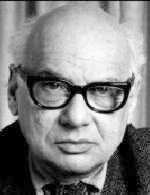
All Set for jazz ensemble and Partitions for piano (are works in which he uses the notion of 'time points' - his search for achieving a polyphony in which the rhythmic organisation combines, though not duplicates, the pitch organisation - as used in most of his works from 1957 onwards and realised through the electronic studio where the rhythmic precision demanded by his system could be realised), Sounds and Words for soprano and piano, combine his clarity and care with a new richness and lively virtuosity appropriate to the conditions of live performance; Two Sonnets for baritone, clarinet, viola and cello exhibit a neat parallel between the rhyme scheme and serial forms employed, the Second Quartet is a model of lucid serial organisation.
His later works: Post-Partitions for piano, and Relata I for orchestra, show his concentration of musical meaning, through the close connection between the pitch organisation and the rhythmic organisation, and his use of every parameter to assist in conveying structure. The Third Quartet shows features of metronomic stability, of changes of velocity engineered by changes in metrical density, of sectional formation, and of the use of every musical parameter - including the distinction between arco and pizzicato, to project the structure of the integrated polyphony. Live performance of these works have thus not been totally possible. He has had a strong influence as a teacher and theoretician in the United States. Chance elements are not found in his music. His interest is the mental limitations on the nature and complexity of musical structures which the composer may propose. He believes that the serious composer today should accept his isolation from the public as a necessary condition of his functioning, and should proceed to develop the resources of his art in works neither suitable nor intended for the average listener.